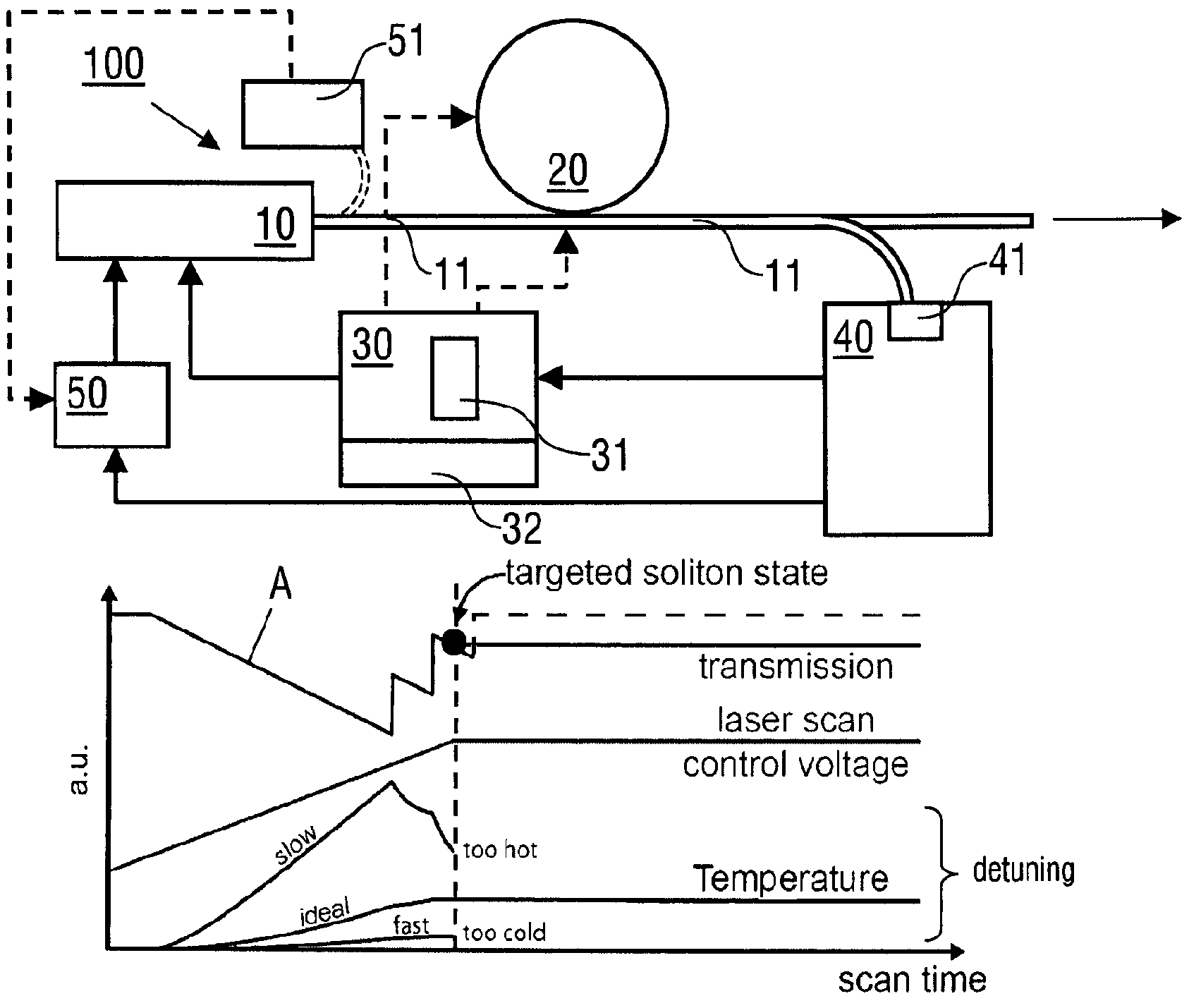Generating optical pulses via a soliton state of an optical microresonator
a soliton state and microresonator technology, applied in optics, laser details, instruments, etc., can solve the problems of difficult to achieve the goal, the inability to generate conventional frequency combs, and the inability to maintain the temporal and phase properties of optical pulses, so as to improve the coupling efficiency of coupling cw laser light into the optical microresonator, the effect of compact and stable structure of light pulse sour
- Summary
- Abstract
- Description
- Claims
- Application Information
AI Technical Summary
Benefits of technology
Problems solved by technology
Method used
Image
Examples
Embodiment Construction
[0037]Preferred embodiments of the invention are described in the following with particular reference to the structure of the inventive light pulse source and in particular the features of a tuning device, which is used for achieving the soliton state of the optical microresonator. Exemplary reference is made to the use of a WGM microresonator made of an MgF2 crystal. It is emphasized that the invention is not restricted to this particular type of an optical microresonator, but rather possible with other resonators being made of e.g. CaF2, BaF2, SiN, AlN, SiO or Si. Furthermore, exemplary reference is made to the use of a tuning device, which is adapted for wavelength and / or intensity tuning the light pulse source. The invention is not restricted to this exemplary tuning mechanism, but rather possible with other tuning mechanisms, which are capable of creating and maintaining a predetermined relative detuning between a cw laser and the optical microresonator, like e.g. coupling tuni...
PUM
| Property | Measurement | Unit |
|---|---|---|
| mode-field diameter | aaaaa | aaaaa |
| line width | aaaaa | aaaaa |
| diameter | aaaaa | aaaaa |
Abstract
Description
Claims
Application Information
 Login to View More
Login to View More - R&D
- Intellectual Property
- Life Sciences
- Materials
- Tech Scout
- Unparalleled Data Quality
- Higher Quality Content
- 60% Fewer Hallucinations
Browse by: Latest US Patents, China's latest patents, Technical Efficacy Thesaurus, Application Domain, Technology Topic, Popular Technical Reports.
© 2025 PatSnap. All rights reserved.Legal|Privacy policy|Modern Slavery Act Transparency Statement|Sitemap|About US| Contact US: help@patsnap.com



